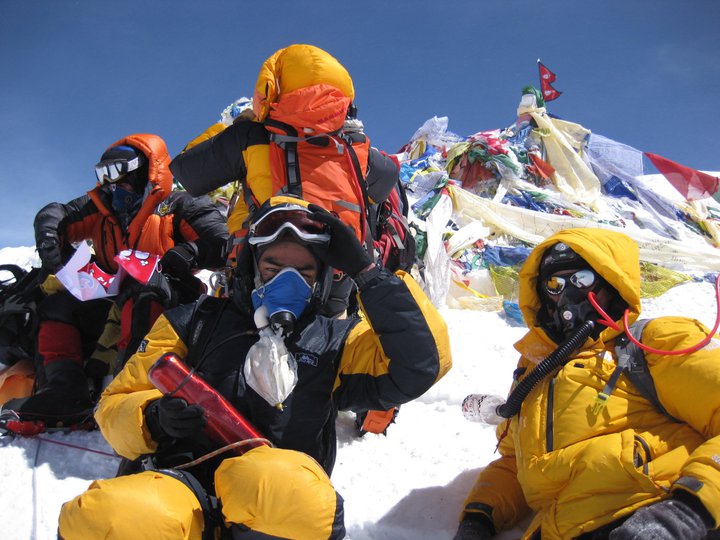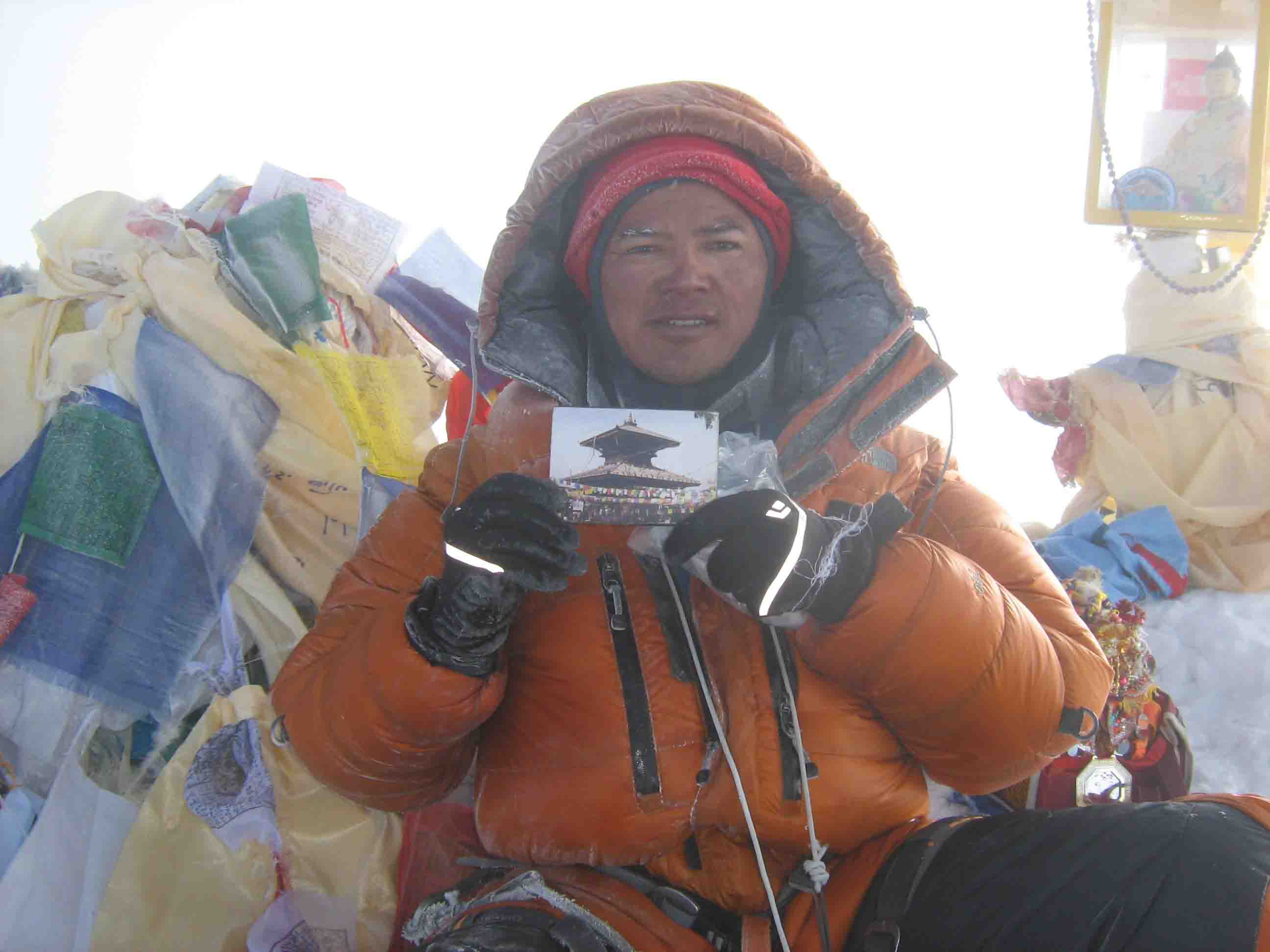Equipment Check List for Everest Expedition
Booked a trek to Nepal and unsure about what to pack? Here’s a handy checklist to guide you! You can adjust it to fit your needs. If you’re missing items or short on time, don’t worry—most gear is readily available in Kathmandu, with great quality, either locally made or imported. Keep your luggage light for a smoother journey, as porters can carry a maximum of 25 kg for two people.
Check out the equipment checklist below!
General
- Duffel or Rucksack bag: (Agency will supply complimentary water and windproof duffel/kit bag, but one extra big duffel bag/suitcase is necessary for non-trek items left at the hotel in Kathmandu)
- Day pack: (Approximately 20-30 Liter)
- Down Jacket: (Your own Down Jacket is strongly recommended)
- 4 seasons’ Sleeping bag: (Your own sleeping bag strongly is recommended, but Agency also supply complimentary sleeping bags which need to be returned at the completion of the trek for the renting).
Equipment List:
Climbing Gear
- Helmet: Must be able to fit over your ski hat
- Alpine Ice Axe: General mountaineering tool (65-70cm)
- Crampons: 12 points
- Ascender: 1 right or left-hand ascender
- A mountaineering harness, with adjustable leg loops
- Carabiners: 3 lockings and 6 regular*
- Rappel device: ATC or figure 8*
Clothing
Footwear:
- Mountaineering boots: suitable for above 8000m; Scarpa phantom 8000 or equivalent (This is because we can work under extreme weather conditions and also preparing you for your ultimate goal to climb Everest)
- Hiking shoes for the trek to base camp.
- Booties: Optional, down is best.
- Bridgedale Summit socks or equivalent: 6 pairs
- Bridgedale Liner socks or equivalent: 3 pairs
Body Layers:
- 2 merino base layers: top and bottom
- 1 mid-layer top: breathable
- Underwear
- Lightweight Nylon Pants: 1 pair
- Soft Shell jacket with hoody: To be worn over other layers
- Soft Shell Pants: Very breathable and water repellent
- Hard Shell Jacket with hood: A waterproof and breathable shell jacket
- Hard Shell Pants: Waterproof and breathable shell pants
- Insulated Down Jacket with hood: (fill power 800) or equivalent to Rab’s Electron Jacket. We primarily wear this when climbing below Camp 3
- Insulated synthetic Pants: Worn primarily when climbing below Camp 2
- Long jones equivalent to Rab’s Polartec or equivalent: 2 pairs
- Summit Down Suit
Headgear and Handwear:
- Warm Hat: Synthetic or wool hat (ski hat)
- Sunhat: To shade your face/neck from the sun on a hot day
- Buff: To protect your neck/face from the sun
- Glacier glasses: Full protection with side covers or wrap around
- Ski goggles: To be worn on summit day in the event of high winds
- Lightweight synthetic liner gloves: For wearing on a hot day; 2 pairs
- Softshell gloves: To wear for moderate cold/wind
- Shell glove with insulated liner: To wear for severe cold / strong wind
- Expedition Mitts
Personal Gear:
- Expedition Backpack: 65L pack should be large enough.
- Trekking Backpack: To carry on the trek to base camp. Simple and light.
- Sleeping Bag (for high camps): Rated to at least -40°F. Goose down or synthetic.
- Sleeping Bag (for base camp): rated to at least -20°F
- Compression stuff sacks: 3 large ones; for reducing the volume of the sleeping bag, down parka, etc., in your pack
- High-Quality sleeping pad (1 for base camp and 1 for high camps): Full length is preferred
- Closed-cell foam pad: To be used in conjunction with the inflating pad for warmth and comfort when sleeping
- Trekking poles with snow baskets: Adjustable poles
- Cup: Plastic insulated cup for drinking
- Bowl: A plastic bowl for eating dinner or breakfast
- Spoon: Plastic spoon
- Head torch: 1 normal for base camp and 1 with remote battery systems for climbing at night. This will be used whilst climbing at night
- Sunscreen: SPF 50 or above
- Lip balm with sunblock
- Water bottles: 2 wide mouth bottles with a 1-litre capacity
- Water bottle parkas (2): fully insulated with zip opening
- Thermos: 1 litre (buy a good one to keep your water warm for longer hours)
- Pee bottle: 1-litre minimum bottle for convenience at night in the tent
- Toiletry bag: Include toilet paper and hand sanitizer and a small towel
- Hand warmers & toe warmers
- Penknife or multi-tool (optional)
- Camera: bring extra batteries and memory cards.
- Personal solar charging system (optional but recommended)
- Travel Clothes: For days in-country
- Duffel bags (2) with locks: To transport equipment
- Base Camp Items: Kindle, I pad, smartphone, etc
- Snack food: Please bring a few days of your favourite climbing snack food such as bars, gels, nuts, beef jerky, etc. A variety of salty and sweet is good
- Small personal first aid kit: Include athletic tape, Band-Aid’s, Ibuprofen, blister care***, personal medications, etc
- Medications and Prescriptions: Bring antibiotics (Azithromycin, etc.), and altitude medicine such as Diamox and dexamethasone
Mount Everest, standing at an awe-inspiring 8,848.86 meters (29,029 feet), is the highest mountain in the world and has been the ultimate destination for climbers from across the globe. Attempting an Everest expedition is a monumental challenge that attracts adventurers, mountaineers, and thrill-seekers alike. But what is it about climbing Everest that continues to captivate so many? It's more than just the height—it’s a test of endurance, mental toughness, and sheer willpower.
History of Everest Expeditions
Everest expeditions have a rich history dating back to the early 20th century. The first successful summit was achieved by Sir Edmund Hillary from New Zealand and Tenzing Norgay, a Sherpa of Nepal, on May 29, 1953. This historic moment opened the floodgates for many more mountaineers to attempt the feat, with each new expedition contributing to the evolving story of Everest.
Some key milestones include:
- 1975: Junko Tabei becomes the first woman to summit Everest.
- 1996: The deadliest season in Everest history, where 12 climbers perished, highlighted by the infamous “Into Thin Air” disaster.
The Route to the Summit
There are two main routes to the summit of Everest:
- South Col Route (Nepal) – The most popular route, which begins from the Nepal side and passes through the Khumbu Icefall.
- North Col Route (Tibet) – A slightly more technical route, starting from Tibet, with a different set of challenges.
Both routes have their pros and cons, but most climbers prefer the South Col Route due to more accessible logistics and support from Nepalese agencies.
Preparation for the Everest Expedition
Preparation for an Everest expedition is crucial for success. It requires a combination of physical, mental, and logistical preparation.
-
Physical Fitness and Training: Climbing Everest is an extreme endurance sport. Training typically begins a year in advance and focuses on cardiovascular fitness, strength training, and high-altitude acclimatization.
-
Mental Preparation: Climbing Everest is as much a mental challenge as it is physical. The psychological toll of the climb, from isolation to fear of the unknown, cannot be underestimated.
-
Gear and Equipment Essentials: Mountaineers must carry high-quality gear, including specialized clothing for extreme temperatures, oxygen cylinders, tents, and safety equipment like ropes, crampons, and ice axes. Packing light but thoroughly is the key to a successful climb.
-
The Role of Sherpas: Sherpas, who live in the high-altitude regions of Nepal, are the backbone of Everest expeditions. They assist with carrying loads, setting up camps, and guiding climbers through difficult sections of the route.
Best Time to Attempt the Everest Expedition
Timing is everything when climbing Everest. The most favorable conditions occur in two main windows:
-
Pre-Monsoon Season (April-May): This is the most popular time to attempt a summit. The weather is relatively stable, and climbers take advantage of a brief period of calm before the monsoon season.
-
Post-Monsoon Season (September-October): Though less popular, this period offers a second opportunity. The risk of snow accumulation and unstable weather is higher, making it a more difficult choice for climbers.
Costs Involved in an Everest Expedition
Climbing Everest is not only physically demanding but also a significant financial investment. The cost of a typical expedition ranges between $30,000 to $100,000 depending on the services and support included.
-
Permit Fees: The government of Nepal charges a climbing permit fee that can range from $11,000 to $25,000 per climber. Permits for the North Col route are managed by China and are slightly cheaper.
-
Additional Costs: These include the cost of equipment, flights, accommodation, Sherpa services, food, and oxygen.
Challenges of Climbing Mount Everest
Climbing Mount Everest is not just a simple hike; it presents a series of daunting challenges:
-
Extreme Weather Conditions: Temperatures on Everest can plunge below -60°C (-76°F), with winds reaching speeds of 200 mph.
-
Altitude Sickness: The thin air at high altitudes can cause Acute Mountain Sickness (AMS), High Altitude Pulmonary Edema (HAPE), or High Altitude Cerebral Edema (HACE), all of which can be fatal if not treated.
-
Fatigue: Even the fittest climbers face extreme fatigue due to the physical exertion required at high altitude.
Life in Everest Base Camps
The Everest expedition starts with a stay at the base camps. Everest Base Camp (EBC) on the southern route is located at 5,364 meters (17,598 feet), where climbers spend weeks acclimatizing.
Daily life at EBC involves rest, preparation, and slow acclimatization. It's also a social hub where climbers from around the world interact and share stories.
The Role of Sherpas in Everest Expeditions
Sherpas play an indispensable role in Everest expeditions. They are responsible for setting up the high-altitude camps, carrying supplies, and helping climbers navigate the tricky terrain. They are exposed to significant risks, yet their contribution is vital to most climbers' success.
Environmental Impact of Everest Expeditions
With the increasing number of climbers comes the unfortunate environmental impact. Everest has become notorious for the litter left behind by expeditions. Efforts to clean the mountain are underway, but sustainable practices must become more widespread.
The Everest Expedition Experience: Step-by-Step
The journey starts with a trek to Everest Base Camp, followed by an acclimatization period. The climb itself involves navigating the dangerous Khumbu Icefall, climbing up to the higher camps, and finally making the arduous push to the summit from Camp 4.
The Role of Technology in Modern Everest Expeditions
Technology has revolutionized Everest expeditions. From GPS tracking to satellite communications and real-time weather updates, these advancements help improve safety and success rates.
Health Risks and How to Manage Them
Altitude sickness is the most common risk. Climbers are advised to ascend slowly, stay hydrated, and be prepared to descend if symptoms worsen. Emergency evacuation is available, but prevention remains key.
Success Stories and Tragic Tales of Everest
Climbing Everest is a dream come true for many, but it’s also a place of tragedy. Stories of climbers who succeeded, like Reinhold Messner (the first to summit without supplemental oxygen), stand in contrast to the tales of those lost, reminding us of Everest's dangers.
Conclusion
The Everest expedition is not just a physical journey but a testament to human spirit, resilience, and determination. Despite the costs and challenges, the allure of standing on the world’s highest point remains an irresistible goal for many adventurers.












Aline de France écrit sur 08-04-2021
Agence très sérieuse, professionnelle toujours à l’écoute de nos attentes et de nos envies.Capable de nous proposer des treks à la demande et personnalisés.Cela fait maintenant la 13ème année que nous partons avec Churen Himal Treks.